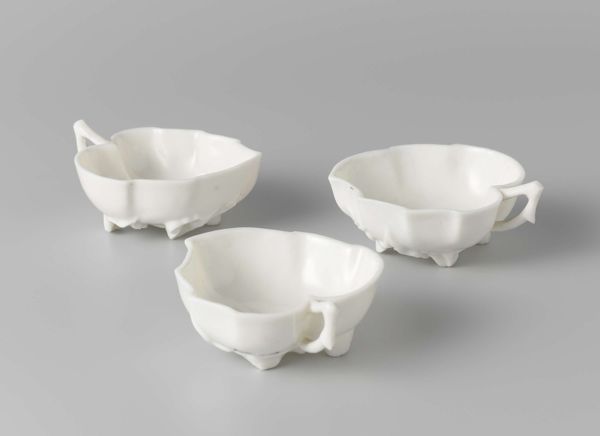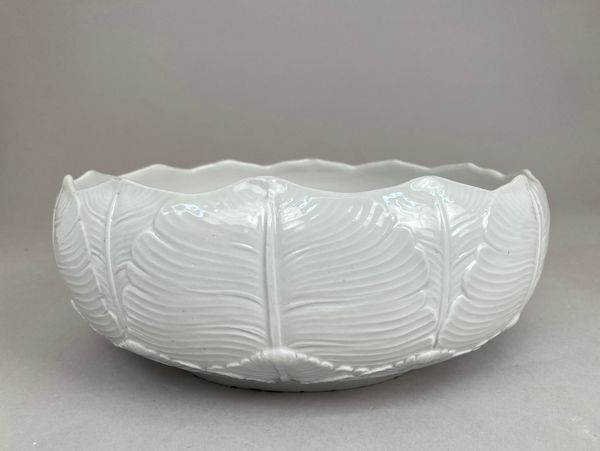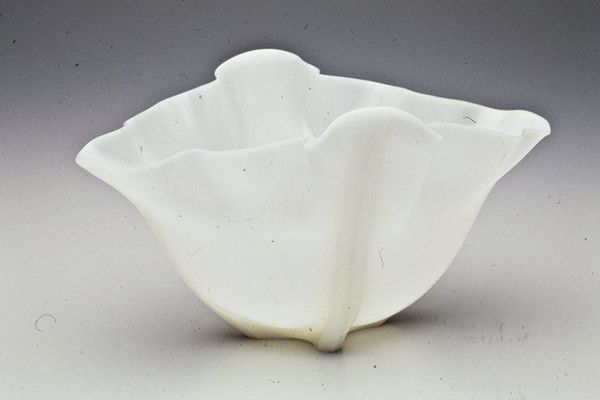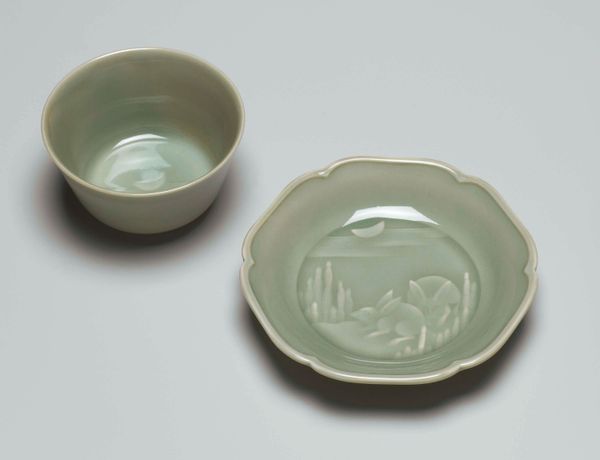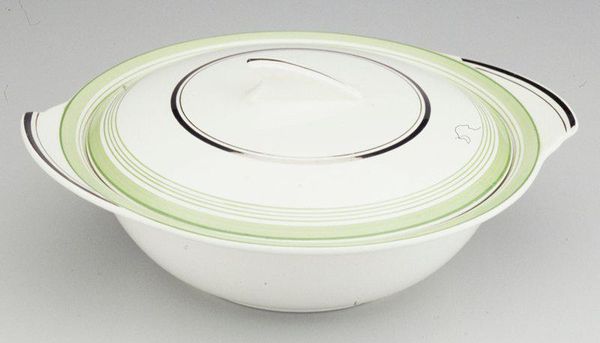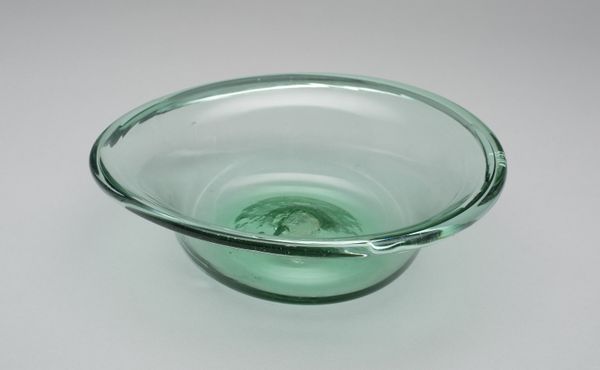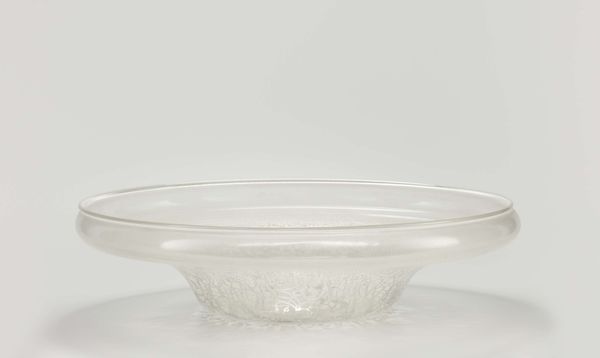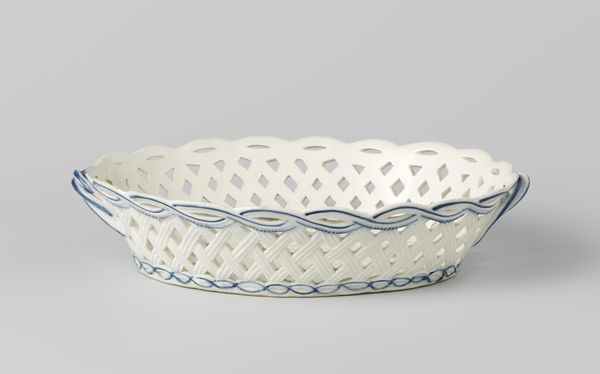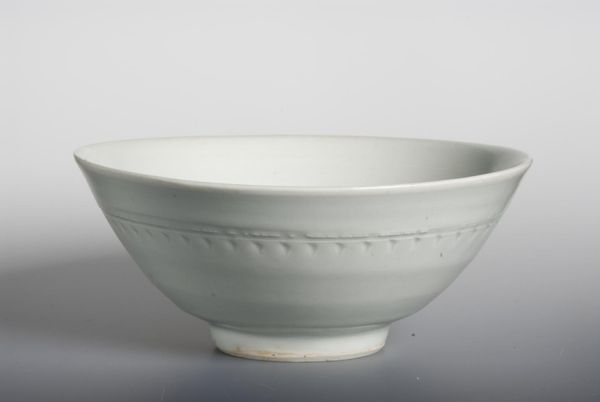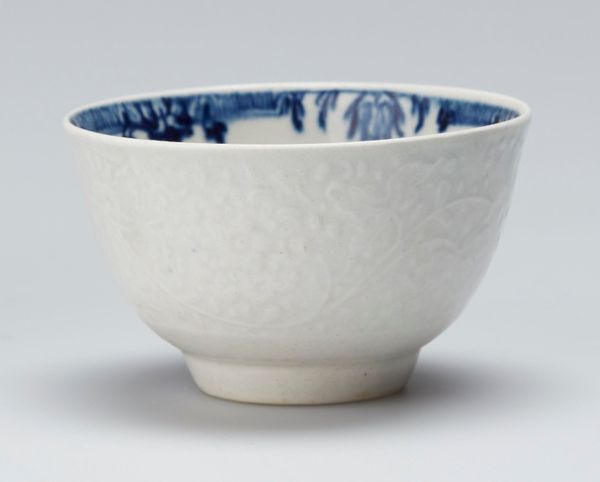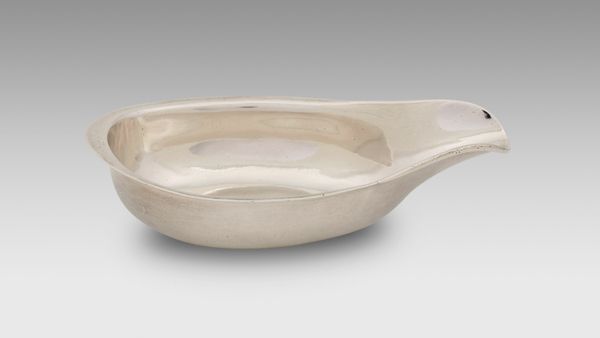
ceramic
#
ceramic
#
form
#
ceramic
#
decorative-art
Dimensions: 9 3/16 x 14 1/2 x 14 1/2 in. (23.34 x 36.83 x 36.83 cm)
Copyright: No Known Copyright
Curator: Good morning! Today we’re looking at “(White Bowl),” a ceramic piece made around the late 20th century by the artist Ōno Kōtarō. Editor: My first impression is how serenely minimal it seems, almost ethereal. It looks so smooth. Curator: It is deceptive in its simplicity, isn't it? The artist's control over the clay is really evident when you consider how unforgiving this kind of ceramic can be. Each curve of the wave seems perfectly placed, contributing to its overall delicate form. I think the key is appreciating that control, that skill – understanding the physical labor translated into beauty. Editor: I completely agree. The waves are a focal point, creating a dynamic rhythm. I'd argue they lend it a visual poetry, capturing movement within something so solid. It evokes thoughts of flowing water, a sense of constant flux frozen into stillness, do you see how the light just rolls over that? It's fantastic. Curator: That movement makes the piece feel alive, yes, I wonder where the material was sourced? And who were the other artisans involved in the making process, maybe with its glazing or even in mining the clay? It invites questions about all labor practices related to such objects – a vital part of experiencing it for me. Editor: Right. The pristine white elevates the material too; it’s interesting how it creates an ambiguity where it’s challenging to reconcile what’s actually a common vessel in ceramic form with a much more ‘arty’ aesthetic appeal. What do you think the function is then, aesthetic or purely for domestic use? Curator: Well, those aren't mutually exclusive! It could exist perfectly in both spheres. We often create artificial divides. But if you think of its availability to consumers through mass production – how accessible did it become? Who could afford to have "art" on their tables? These factors determine cultural importance more so than design alone. Editor: I guess what remains with me then, regardless of production or labour conditions, is just how evocative its design is. It creates this interesting synthesis, of serenity and movement all caught within that one simple, stunning bowl. Curator: And hopefully this inspires everyone listening to think not only of the beautiful object, but everything that makes its existence possible.
Comments
No comments
Be the first to comment and join the conversation on the ultimate creative platform.
